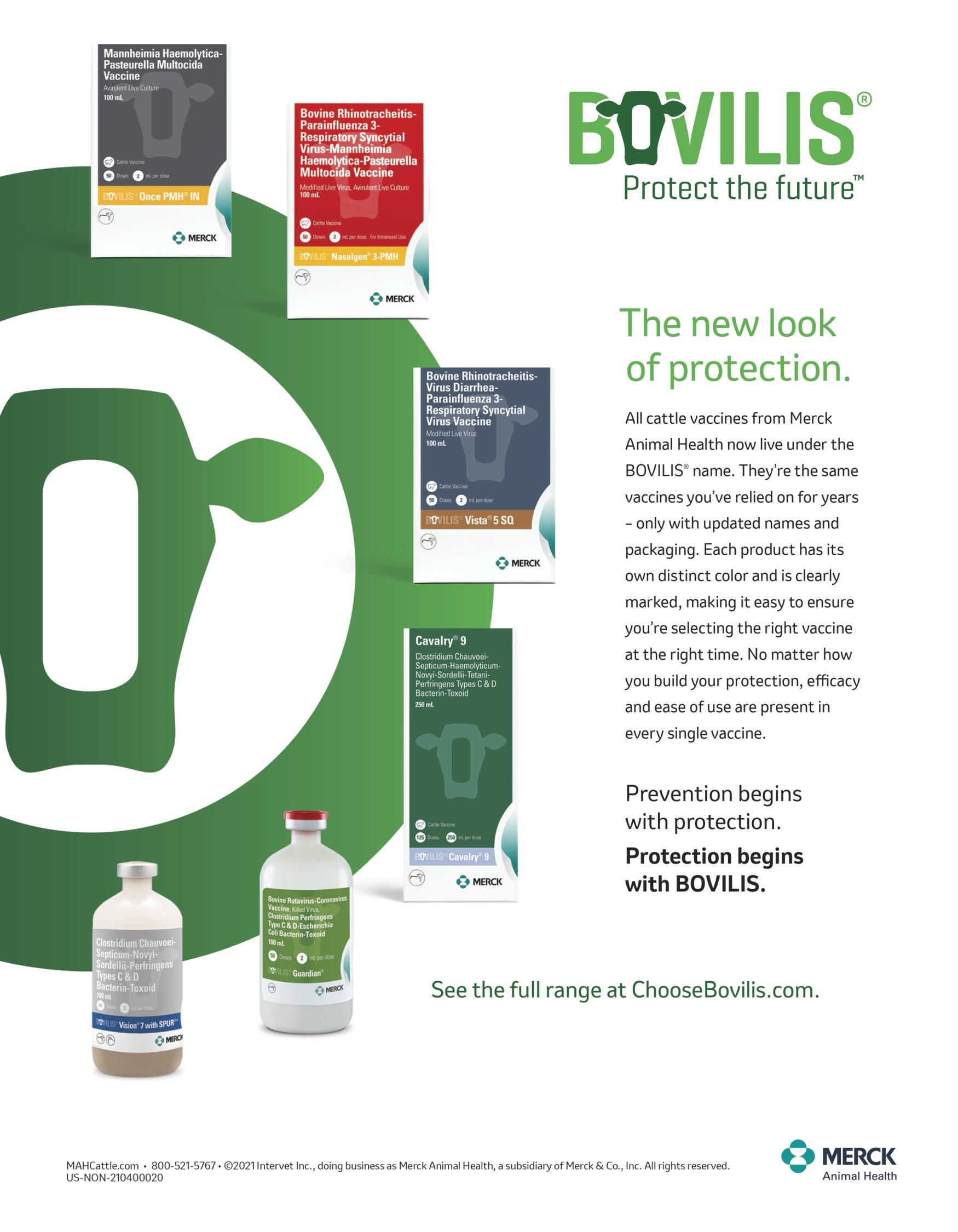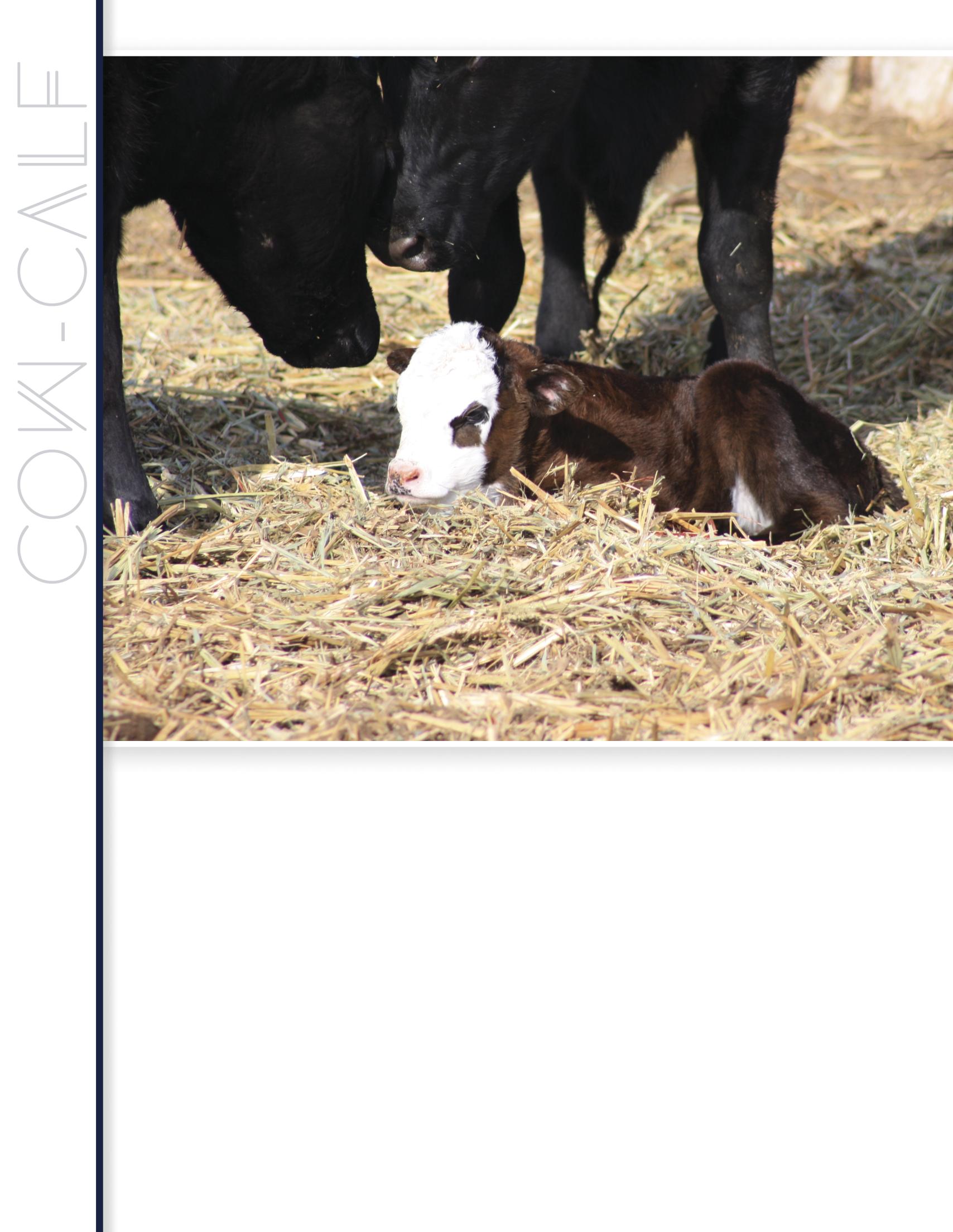
4 minute read
SECRETS TO ACHIEVING TIGHTER CALVING WINDOWS
By Todd R. Bilby, Ph.D., Director of Dairy Technical Services, Merck Animal Health
There is nothing more satisfying to a cattle producer than a pasture full of c ows, all with uniformly sized calves by their sides. But a consistent calf crop is not just eye-appealing – it also leads to economic advantages at weaning time and beyond.
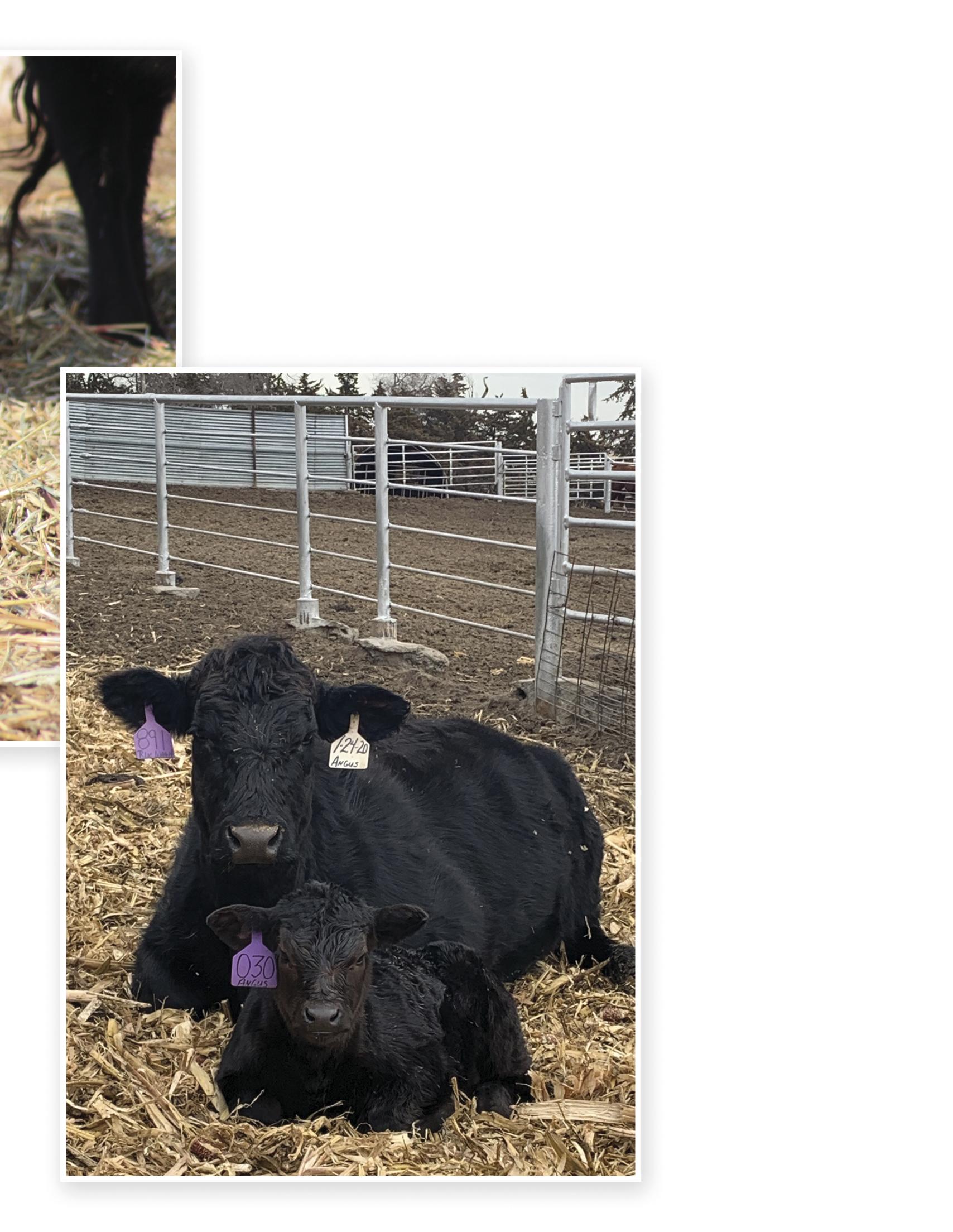
One secret to achieving uniform calves is maximizing the number of pregnancies early in the breeding season. Producers can gain profit potential by striving for tighter calving windows. The key to success is getting the majority of cows and heifers bred early in the breeding period.
Advantages of earlier calving
Research at the University of Nebraska-Lincoln (UNL) found key performance advantages for calves born during the first three weeks of the calving season. Earlier born calves not only have higher weaning weights and more value at market time, heifers born earlier have higher reproductive performance when they reach breeding age themselves.1
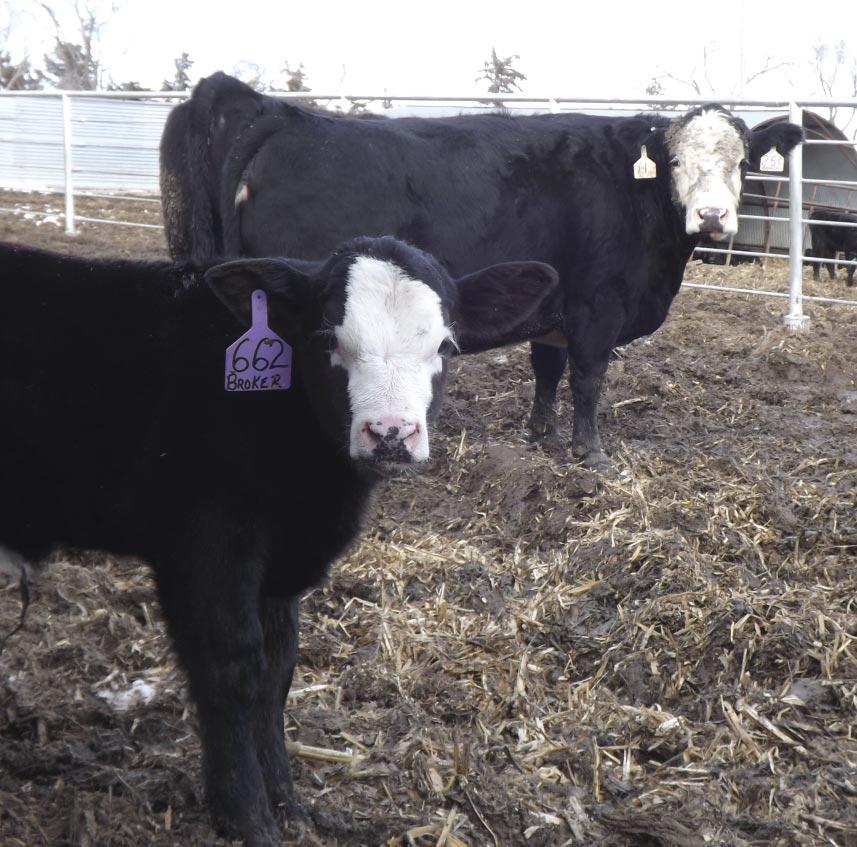
UNL researchers studied calving records over 10 years from the Gudmundsen Sandhills Laboratory in Whitman, Nebraska. Records analyses found these advantages for calves born during the first 21-day period, compared with calves born later:
• Calves born in the first 21 days were 75 pounds heavier at weaning compared to calves born in the last 21 days of the calving season.
• Earlier-born steer calves had higher carcass weights, marbling scores, and yield grades at harvest – adding up to higher overall carcass value.
Achieving a tighter calving window with bull breeding
Estrus synchronization is a useful tool for producers looking to calve earlier, tighten calving windows, and produce higher value, more consistent calves. Although many cattle producers connect estrus synchronization with artificial insemination (AI) breeding, research demonstrates the benefits of using synchronization programs with natural service breeding as well.
In a second study at UNL, researchers compared calves born during non-synchronized, 60-day breeding seasons with calves born during a shorter, 45-day calving season achieved using estrus synchronization. To synchronize estrus, cows received a single injection of prostaglandin administered 108 hours after mixed-age bulls were turned in. Control cows were not synchronized. 2
Results showed that estrus synchronization with prostaglandin increased the number of cows giving birth early in the calving season. Here are key research findings:
• Seventy-three percent (73%) of synchronized cows calved during the first 21 days, compared with 61% of unsynchronized cows.
• Calves born to synchronized dams were 20 pounds heavier at weaning.
• Calves born in the first three weeks of the calving season recorded higher carcass performance, with greater carcass weights, marbling scores, and yield grades than calves born later.
• Overall, calves born to dams given prostaglandin were worth $77 more in carcass value.
Synchronization timing matters
When using estrus synchronization with natural service, the ideal time to give prostaglandin is four to five days after turnout with the bulls. That is because the corpus luteum (CL) is more responsive to prostaglandin by day five to six of the 21-day estrus cycle. Cows that show heat in the first five days of their cycle will not respond to the prostaglandin, but bulls often catch these cows in heat regardless. And a prostaglandin shot will do no harm.
To achieve the best response from prostaglandin, cattle must be cycling at the time of the shot. By giving prostaglandin at day five after turnout, 75% of cycling cows will likely respond and be bred by the bull in the following two to five days. The best approach is to run cow-calf all cows through the chute to administer prostaglandin at day five.
• As mature cows, heifers born earlier weaned heavier calves and had greater longevity in the herd.
Due to labor or facility limitations, this protocol may not be practical on every cow-calf operation. In such situations, an alternative is giving one shot of prostaglandin when you turn cows out with the bulls. This “Plan B” protocol will induce more cows to show heats sooner and facilitate a tighter breeding window than breeding with no synchronization.

Management steps for reproductive success
Many management factors can impact the success of reproductive programs, with or without estrus synchronization programs. Keep these steps in mind as you plan for the breeding season:
• Vaccination. Work with your veterinarian to develop a vaccination program that protects heifers, cows, and bulls against the reproductive diseases that are prevalent in your area. Implement yearly vaccinations against diseases such as BVD, BRSV, IBR, PI3, leptospirosis, and vibrio.
Vaccinations for cows and heifers should focus on optimizing conception and preventing embryo loss.
• Breeding soundness. To ensure your bulls are highly fertile, ask your veterinarian to conduct breeding soundness examinations (BSE) within 60 days of the start of the breeding season. Early testing allows ample time to purchase replacement bulls if necessary.
• Stocking rate. Plan for an adequate number of bulls to ensure a short breeding window. The industry-recommended standard of 1:25 bull-tofemale ratio is sufficient when using a one-dose prostaglandin protocol for synchronization. More bull power may be needed if using younger, inexperienced bulls.
• Adequate nutrition. Heifers and cows need good body condition to conceive and carry a calf successfully. Provide good nutrition, including mineral supplements, based on your nutritionist’s recommendations.
• Parasite management. It is ideal to deworm animals after they come off pasture in the fall. Keeping pregnant animals free from internal parasites during the winter helps them maintain body condition and maximize nutrients for fetal development. Administer a dewormer again in the spring. Consider a Fecal Egg Count Reduction Test (FECRT) to measure effectiveness of parasite control.
• Accurate recordkeeping. Keeping accurate records can help you measure reproductive success, evaluate the value of your management tools, and make culling decisions based on cow fertility. Examples of reproductive goals include:
– Greater than 90% of females in heat during the first 21 days of the breeding season.
– Seventy percent (70%) conceive on first breeding.
– Less than 5% difficulty calving.
More than 90% of bred cows successfully wean a calf.
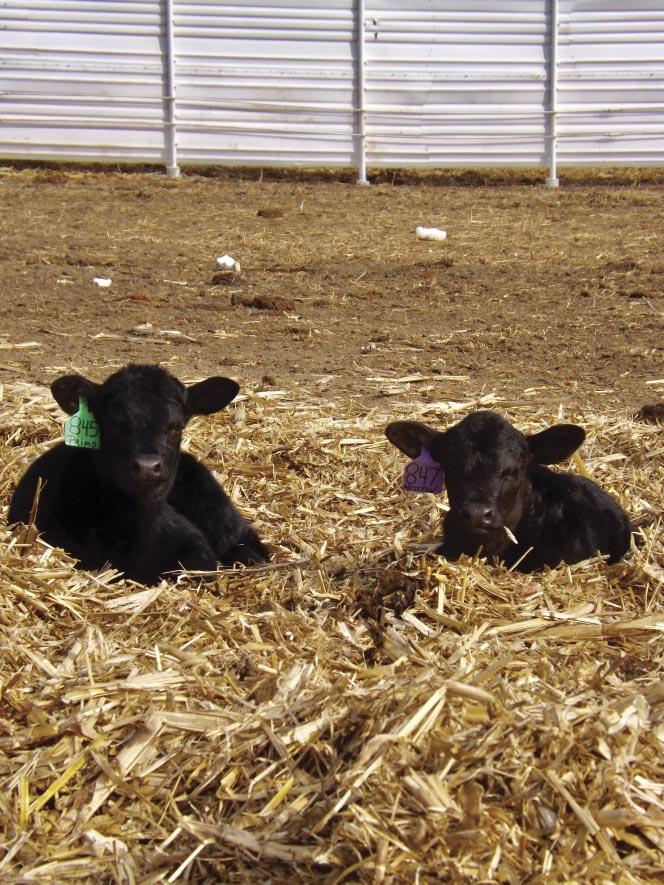
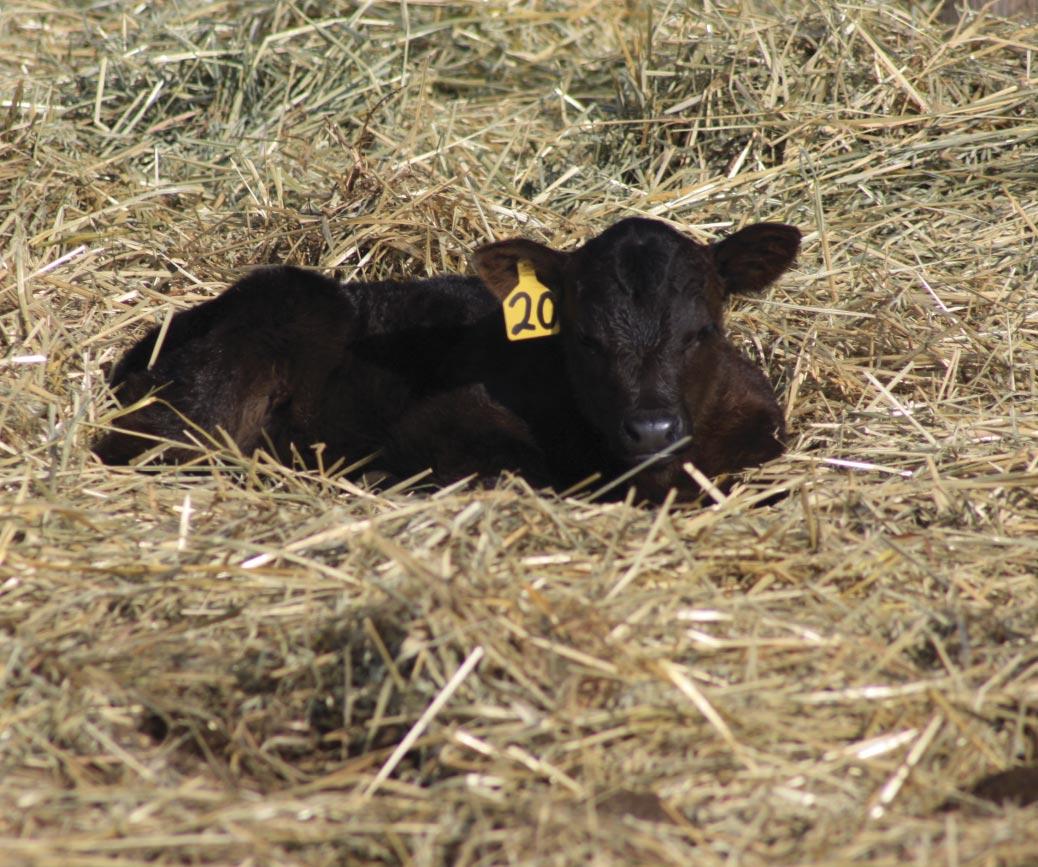
Investing time and resources to tighten the calving window is beneficial, regardless of size of operation or breed of cows. Consult your veterinarian for assistance in developing a successful breeding program that fits your needs. Another useful resource is the Beef Reproduction Task Force website at BeefRepro.org.
References
1 Funston RN, Musgrave JA, Meyer TL, Larson DM. Effect of calving distribution on beef cattle progeny performance. J. Ani. Sci. 2012; 90:5118-5121.
2 Larson DM, Musgrave JA, Funston RN. Estrus synchronization increases early calving frequency, which enhances steer progeny value. Nebraska Beef Report. 2010; 14-16.
Based in Texas, Todd Bilby, Ph.D., leads a fieldbased, customer-focused technical services team at Merck Animal Health. He holds a doctorate in reproductive physiology from University of Florida, Master’s degree in reproductive physiology from the University of Arkansas, and a Bachelor of Science degree in animal science from Oklahoma State University. Before joining Merck Animal Health in 2013, Dr. Bilby was associate professor and dairy extension specialist at Texas A&M University.

